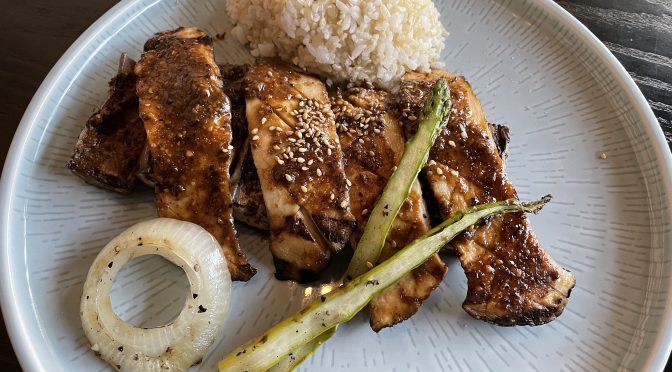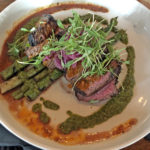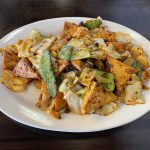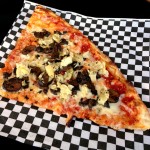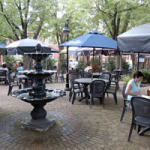By Robin Garr
LouisvilleHotBytes.com
If you haven’t heard about Chef Edward Lee’s new Korean restaurant Nami by now, it’s probably only because you haven’t been paying attention. The news about this Korean-American top chef opening his first Korean restaurant since his 20-something youth in New York City has been all over the place.
Nami, which opened on May 2, has been jammed since the start. If you want a seat, especially on weekends, you should get a reservation will in advance or plan to arrive before 6 p.m.
Regardless, you should definitely go. Nami is sleek and stylish, with a floor-to-ceiling wall of windows framing the streetscape, a long bar, and spare decor that emits an soft Asian vibe.
Nami means “I am beautiful” in Korean, according to the restaurant’s social media, which calls the restaurant “a modern approach to Korean cuisine” that seeks “to share with you the beauty of our cuisine, our design and our hospitality.”
Much of the heavy lifting is done by Chef Breanna Baker, who quickly rose through the ranks from intern to chef de cuisine at 610 Magnolia, and Chef Yeon-Hee Chung, who achieved acclaim at the Korean restaurant Charim in St. Matthews. This deep bench allows Lee the latitude to step out into the dining room, where he makes it a point to stop briefly and welcome diners at each table.
You could call the menu “upscale Korean.” It isn’t pricey by 610 standards, but it might impart sticker shock if you’re expecting pricing akin to the city’s more traditional Asian eateries. That goes double if you decide to spring for Nami’s thick-sliced wagyu rib eye, $125 for a 9-ounce cut.
Otherwise, though, entree pricing isn’t scary, with a total of 14 Korean BBQ dishes, bibimbap rice bowls, and main course dishes priced from $26 (for ja jang myun noodles) to $46 (for deung-shim, beef rib eye with salt, pepper, and sesame oil). A selection of starters, salads, and kimbap hand rolls, many suitable as light meals, range in price from $8 to $16.
The bar program is and attractively priced at the lower end, with creative cocktails from $11-$14 and well chosen wines by the glass, beers on tap, sake and soju. The wine list is as good as you’d expect of a Lee property, and as pricey, with bottles beginning in the $40 range and rising to triple digits for the trophies.
Joined by our friends Steve and MaryJane, we settled in a comfortable booth and started with a trio of House made kimchi (($14) and a bowl of dukbokki rice cakes (($13).
Presented on attractive bowls and plates, like all the dishes at Nami, the three kimchis were based on shredded fennel, cubes of spice-dusted honeydew melon, and thin-sliced marinated red beets.
Dukbokki ricecakes (($13) aren’t quite like any carbohydrate I’ve sampled elsewhere: Tiny white cylinders and green rounds, they’re mild in flavor and very, very chewy. They gain additional flavor interest from herb and vegetable accompaniments: fine-chopped minty mugwort and, onion-scented leek, with strips of shiitake mushroom and carrot, all bathed in a reddish-brown and deliciously flavored Korean chili sauce. It was hot but not fiery, and I could not stop eating it.
Ga-Ji ($27) treats slabs of Asian eggplant and oversize king oyster mushrooms to a Korean barbecue technique with a marinade of briny fermented soybean and garlic marinade, then sears them on the grill and dusts them with sesame seeds. The result looks like beef but tastes like spicy, umami-loaded veggies. It came with a couple of roasted asparagus spears and an onion slice, a mound of three-grain rice, apparently a mix of brown, white, and basmati, and a selection of housemade banchan, the varied plates of spicy and tangy condiments that accompany just about every Korean meal.
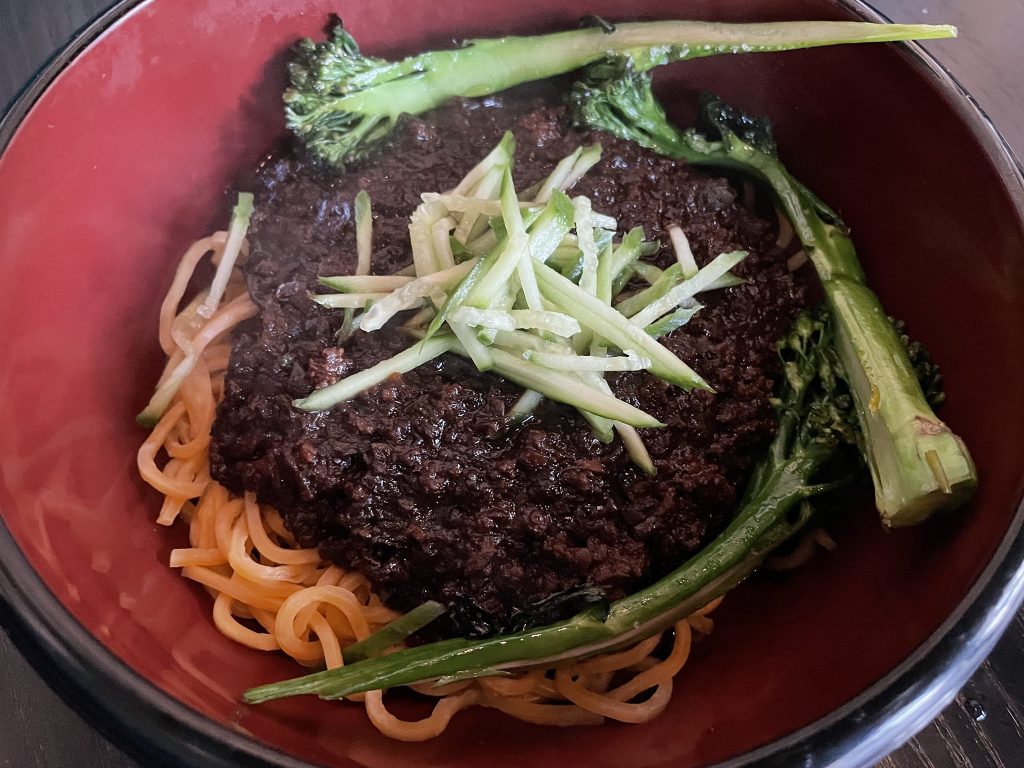
Ja Jang Myun Noodles ($26) could be described as the Korean version of spaghetti with meat sauce. A mound of al dente white noodles reposed in a pretty red and black bowl, topped with a thick, sweet-and-savory sauce fashioned from tiny black beans and ground beef that unctuously cloaked the noodles and made a filling dish. It was topped with crisp shredded cucumber and a couple of florets of almost-raw broccolini.
Dessert drew from a Japanese street-food tradition: Taiyaki ($10) is a crisp filled pastry in the imagined shape of a sea bream fish swimming on a sea of light-blue whipped cream. it was baked to a pale-golden crisp and stuffed with a dab of chocolate pecan-pie filling. It was imaginative but not entirely successful, as the pastry was tough – difficult to cut with a table knife – and there was only a spoonful of filling.
Our share for two, with two entrees, two apps, and a dessert, came to $101.76, plus a $25 tip for excellent service from our attentive yet unobtrusive server, Anna.
Nami Korean Steakhouse
835 E. Main St.
690-2067
nami-restaurant.com
facebook.com/namisteakhouse
instagram.com/namisteakhouse
Noise Level: The restaurant is invariably crowded and noisy, with a few fabric features to soften mostly hard surfaces. An average 79dB sound level approaches the limit of easy conversation.
Accessibility: The main floor is at ground level in a new building and appears fully accessible to wheelchair users with the exception of a few booths equipped with gas-fired barbecue grills.
